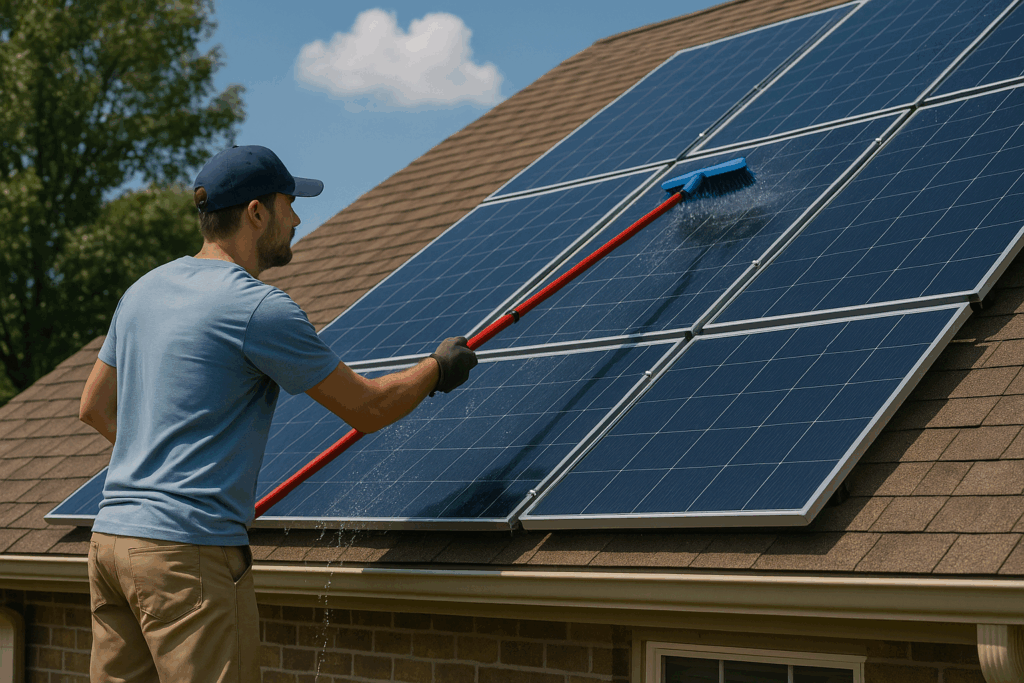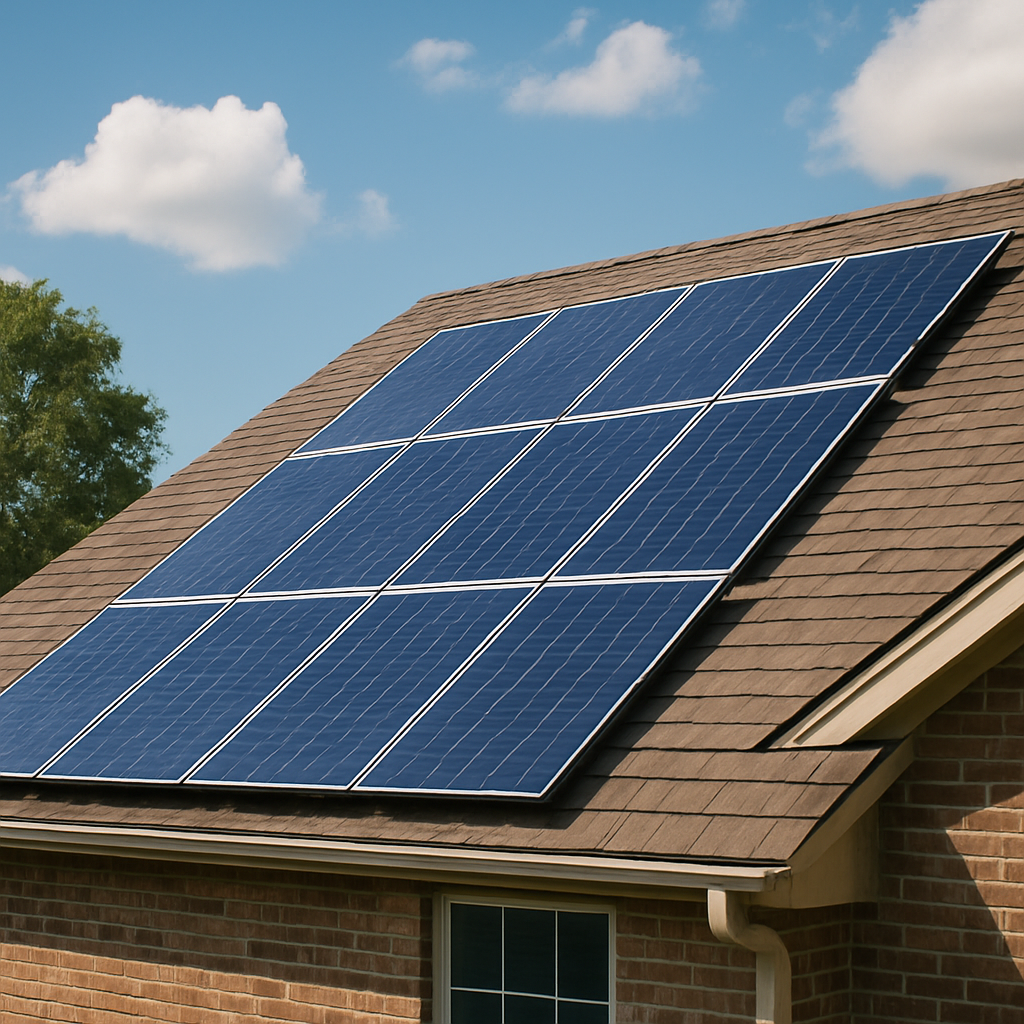Are Solar Panels High Maintenance? Here’s the Honest Truth
If you’ve ever thought about switching to solar but worried it might be a pain to take care of, you’re not alone. Many homeowners think going solar means constant cleaning, fixing, or babysitting their roof. But here’s the truth:
Solar panels are one of the lowest-maintenance things you can install on your home.
They quietly turn sunlight into electricity every day—no moving parts, no motors, and almost no effort on your part. Let’s break it all down so you know exactly what to expect.
☀️ Why Solar Panels Don’t Need Much Maintenance
The reason solar is so easy is simple: there’s not much to break.
- Solar panels just sit there, soaking up sun.
- There are no gears, no motors, and no moving parts.
- They’re built to handle wind, rain, snow, and even hail in most cases.
Once your system is installed, you probably won’t need to think about it for years. Most people don’t even clean their panels more than once a year—if at all.
✅ According to the U.S. Department of Energy, routine maintenance for solar is minimal, usually just basic cleaning and occasional checkups.

🧽 What About Cleaning?
Rain does most of the work for you.
In places like Florida or coastal California, rain naturally washes off dust and dirt. The main time you might need to clean your panels is if:
- You live in a dry, dusty area (like West Texas or Arizona)
- There’s a lot of pollen, bird droppings, or ash from wildfires
- Your panels are under a tree and get leaves or sap on them
Even then, cleaning is easy:
- A gentle rinse with a hose (if you can reach from the ground)
- Or hire a pro—most solar panel cleaning companies charge $100 to $150 per visit
🚫 Never use pressure washers or harsh chemicals. Panels are tough, but the surface is designed to be delicate enough to let in light. A soft brush or sponge is plenty.
🧠 Real-Life Example: Dust in Texas
We spoke with a homeowner in Lubbock, Texas, where dust storms are common in spring. After a few windy weeks, their solar production dropped by about 12%.
Instead of climbing on the roof, they paid a local cleaner $120 to wash the panels. Within 24 hours, output was back to normal—and their monitoring app even showed the difference.
They now schedule a once-a-year professional clean and let the rest ride.
🧊 What About Snow and Ice?
If you live in a snowy area like Utah or Colorado, snow might cover your panels during storms. And yes, if snow completely covers them, they’ll stop producing electricity for a bit.
But don’t stress:
- Most panels are installed at an angle
- The dark surface and heat from the sun help melt snow quickly
- Systems bounce back in a day or two without you lifting a finger
✅ According to the National Renewable Energy Lab, snow causes less than a 5% drop in annual solar production for most homes.

🛠️ What Else Might Need Attention?
While panels rarely have issues, other parts of the system may need attention down the road:
- Inverters (the part that turns sunlight into usable electricity) often need replacing every 10 to 15 years
- Wiring or mounts may loosen over time but are usually checked during annual inspections
- Monitoring systems can alert you if something isn’t working properly—many even send automatic messages to your installer
Think of it like this: You probably take your car in once a year. Solar is even easier.
🔍 How Do You Know If Something’s Wrong?
Most systems come with an app that shows your energy production in real-time. If there’s ever a problem, you’ll see it.
Maybe your power output dips on a sunny day. That might mean:
- A panel is dirty
- A tree grew and started shading it
- Or a part like the inverter needs a checkup
Some systems even email you or your installer when something’s off, so you can fix it before you even notice a problem on your bill.
🔧 Should You Get an Inspection?
A lot of solar companies offer yearly or twice-a-year inspections, which include:
- Checking your system’s output
- Testing wiring, mounts, and connections
- Looking for signs of wear or damage
Some installers even include these inspections for free during your warranty period. If not, they usually cost under $200 per year and are worth it if you want peace of mind.
🧯 What’s Covered Under Warranty?
Before you buy, ensure your panels come with 25 year performance warranty, which means:
- They’re guaranteed to keep producing at least 80–90% of their rated power for decades
- If they break or stop working early, they get replaced or fixed
Inverters, batteries, and other parts often have 10–15 year warranties, depending on the brand.
Ask your installer what’s included—but the good news is most quality systems are designed to outlive the warranty.
🧘 Bottom Line: Set It and Forget It
If you’re worried about solar being another chore—don’t be. This isn’t like mowing the lawn or checking the water heater.
Solar panels are quiet, durable, and nearly maintenance-free. You won’t have to babysit them or spend weekends climbing on the roof.
So if you’ve been holding off because you thought solar meant extra work, relax. Once installed, your system just sits there saving you money.
👉 Want to See Your Options?
If you’re curious about whether your home qualifies, what solar would cost, or how much you could save, it’s easy to find out.
If you want to see your options and what you qualify for, click here:
sundialslr.com
📋 Sources with Links
- U.S. Department of Energy – Solar Panel Maintenance
https://www.energy.gov/eere/solar/solar-panel-maintenance - National Renewable Energy Laboratory (NREL) – Snow Impact Study
https://www.nrel.gov/news/program/2014/study-examines-impact-of-snow-on-solar-panel-performance.html - EnergySage – Do Solar Panels Require Maintenance?
https://www.energysage.com/solar/solar-maintenance/ - Solar Reviews – Solar Panel Cleaning and Maintenance Guide
https://www.solarreviews.com/blog/solar-panel-maintenance-guide
